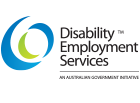
Congratulations!
You’ve accessed the full talent pool and made an offer of employment to someone living with a disability, injury, health condition or disadvantage.
While a person’s disability doesn’t change their ability to do the right job, it is important to recognise how physical adjustments, language, education and leadership play an important role in supporting all employees to thrive, no matter their experience. These adjustments go further than creating a workplace that is inclusive of people living with disability; it recognises building a company culture that is diverse and one that makes everyone feel included regardless of race, geographic location, ethnicity, gender, sexual orientation, disability, socioeconomic status, and appearance[1].
We believe that workplaces no longer have a choice to accept diversity; Kahlil Greene, Yale University, explains “Gen-Zers are highly motivated to support social progress… For many of us, this is no longer ‘nice-to-have’. We want a workplace where we can support non-profit and social impact organizations and take on passion projects that do well for society.”[2] Expanding that statistic, approximately 74% of people we surveyed (not limited to Gen-Z) confirmed they would be uncomfortable working, or would not work, for a company that is not already committed to having a diverse and inclusive workforce.
It follows then that a business that embraces those values held by the majority of a cross-section of society, will have a greater influence over that community and be able to target and provide the right products or services for their market.
Here are six (6) key considerations to help you prepare your workplace to ensure the culture is positive and inclusive.
- MAKE WORKPLACE ADJUSTMENTS:
Workplace adjustments allow a person to do their job safely and productively in an inclusive environment. Workplace adjustments help all your employees to thrive in the workplace.
Here are some examples:
- Allowing a person living with disability, injury or health condition to have some flexibility in their working hours, such as working part-time, starting and finishing later, or teleworking for part of the week
- Introducing fair, more equitable recruitment processes, such as standardised interviews – you can read more here about creating an inclusive recruitment process
- Redistributing minor duties (not inherent requirements of a job) that a person living with disability finds difficult to do
- Buying or modifying equipment, such as speech recognition software for someone with vision impairment, or an amplified phone for a person who is hearing impaired
- Height-adjustable workstations
atWork Australia can help your business access funding from the Australian Government to cover the costs of making workplace changes relevant to your employee’s barrier. If you need to buy equipment, make modifications or access services for your new employee, help is at hand to manage the application process at no cost to your business .Click here for more information.
- PROVIDE EDUCATION AND TRAINING:
Regularly educating staff provides an organisation and its people with practical tools and strategies to gain a deeper understanding of how to attract, recruit and support a diverse workforce.
Not only is it important to adopt a growth mindset where employees can work together to develop their talents and succeed as a team by working together, but organisations must educate their staff on the intricacies of diversity and inclusion. This means, communicating and practicing the use of inclusive language, accessible training for specific job roles and communicating the challenges that someone living with a disability may face so they can receive support from their teammates. With employees motivated to work together and continually learn, they will feel far more empowered and committed[3].
To assist with this, atWork Australia has developed free Disability Awareness Training to enhance consciousness and knowledge of disability and inclusion in the workplace. Our Disability Awareness Training empowers employers to build more diverse teams and confidently supports employees living with disability, injury and health conditions.
- USE INCLUSIVE LANGUAGE:
Language is one of the biggest players in building a company that is diverse and makes everyone feel included regardless of race, geographic location, ethnicity, gender, sexual orientation, disability, socioeconomic status, and appearance[4].
We suggest evaluating the language used in company documentation and how it could be updated to be more equitable[5], and then from there, observe how language is used through written and verbal dialogues. Often, there are commonly two types of expressions that are misused: gendered or exclusive terms, such as the use of ‘guys’ when referring to a group of men and women, and everyday phrases with racist origins[6] or against those living with disability.
For atWork Australia, one of the most important considerations is to ensure we put people first; focusing on the person, not their disability, health condition, illness or disadvantage. For example, “a woman living with a mental health condition” keeps the individual as the essential element and only mentioning when relevant[7] to the context or conversation.
Finally, and most importantly, if you’re not sure you can ask. Inclusive language is nuanced and will often reflect a person’s personal preference. atWork Australia Disability Employment Services Ambassador, Shaun Pianta, says “Don’t be afraid of accidently saying the wrong thing, it’s better than saying nothing at all.”
- CREATE A SENSE OF BELONGING:
Creating a workplace where everybody feels included is fundamental; a sense of belonging is one of the most basic of needs according to Maslow’s Hierarchy of Needs. Maslow states that after physiological and safety needs have been fulfilled, the third level of human need is social and involves feelings of belongingness. This refers to a human emotional need for interpersonal relationships, affiliating, connectedness, and being part of a group[8]. Thus, before a new team member is due to commence, consider the following:
- Assign a buddy
- Extend invitations to team meetings or lunches
- Remember that settings with lots of people, specifically when unknown, can be scary and overwhelming
- Forget ‘fit’ and focus on helping individuals thrive[9]
- EMPATHETIC LEADERSHIP:
While top-down leadership is fundamental to driving culture and cultural change, it is the responsibility of all individuals to be open and inclusive. There are several narratives that run congruently in the workplace, thus if diversity and inclusion only come from HR or one or two of the C-suite executives, it’s impact will be lost or not take hold effectively. It is only when all the C-suite and Managers contribute by filtering behaviours, emotions, experience and education down to teams that a company’s diversity and inclusion plans will truly thrive[10]. Sabrina Clark, Associate Principal at SYPartners states “you have to make sure leaders are equipped to make the story their own, feel it within themselves and be able to explain why they care; why it matters, and why it should matter to their direct reports”[11]
- CELEBRATE AND LISTEN:
Finally, inclusive cultures make people feel valued and proud of whom they are, giving them the confidence to feel like they can contribute freely and without the feelings of prejudice every day. When it comes to supporting diversity and inclusion in the work environment, SocialChorus states “don’t play favourites, practice basic courtesy, and pay special attention to how you can embrace non-discriminatory practices and policies”[12]. Then, take the time to listen to your various groups, segmenting employee surveys to ensure you get a true cross-section of data and can begin to truly understand where issues may lie. Additionally, by elevating the power of shared experiences you will create greater potential for positive change[13].
CONCLUSION
We know diversity and inclusion are good for businesses, however, as we have said and opinion surveys prove, we’ve passed the point of it being acceptable for businesses to be simply working towards diversity. Therefore, we all want workplaces where we can honestly claim that we don’t see differences as a challenge or an afterthought but as rights for all individuals.
atWork Australia are focused on providing employers with resources and guidance on how to implement inclusive workforces where diversity is celebrated. If your business needs support, please visit the atWork Australia website here or reach out to our Employment Engagement team on 1300 080 856.
[1]https://medium.com/diversity-together/70-inclusive-language-principles-that-will-make-you-a-more-successful-recruiter-part-1-79b7342a0923
[2]https://hbr.org/2021/06/dear-ceos-a-gen-zers-open-letter-to-his-future-employers?utm_medium=email&utm_source=newsletter_daily&utm_campaign=mtod_notactsubs&utm_term=subacq_buyeracq_nsubarticle
[3]https://medium.com/diversity-together/70-inclusive-language-principles-that-will-make-you-a-more-successful-recruiter-part-1-79b7342a0923
[4]https://medium.com/diversity-together/70-inclusive-language-principles-that-will-make-you-a-more-successful-recruiter-part-1-79b7342a0923
[5]https://socialchorus.com/blog/15-ways-to-improve-diversity-and-inclusion-in-the-workplace/
[6]https://medium.com/diversity-together/70-inclusive-language-principles-that-will-make-you-a-more-successful-recruiter-part-1-79b7342a0923
[7]https://medium.com/diversity-together/70-inclusive-language-principles-that-will-make-you-a-more-successful-recruiter-part-1-79b7342a0923
[8]https://www.simplypsychology.org/maslow.html
[9]https://www.cio.com/article/3262704/diversity-and-inclusion-8-best-practices-for-changing-your-culture.html
[10]https://www.cio.com/article/3262704/diversity-and-inclusion-8-best-practices-for-changing-your-culture.html
[11]https://www.cio.com/article/3262704/diversity-and-inclusion-8-best-practices-for-changing-your-culture.html
[12]https://socialchorus.com/blog/15-ways-to-improve-diversity-and-inclusion-in-the-workplace/
[13]https://socialchorus.com/blog/15-ways-to-improve-diversity-and-inclusion-in-the-workplace/


